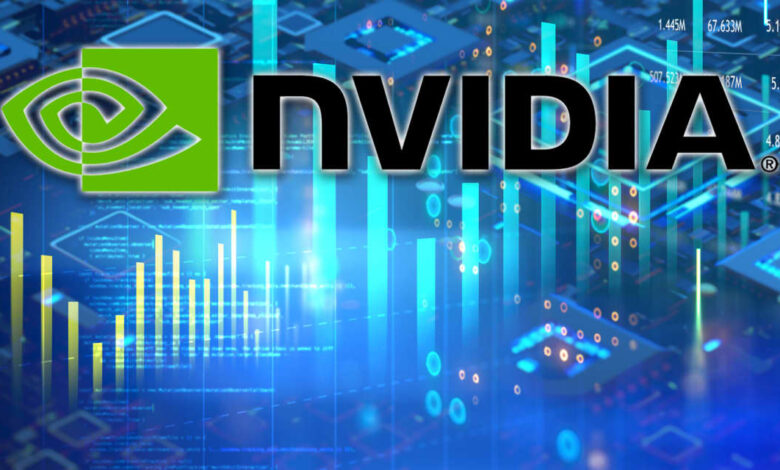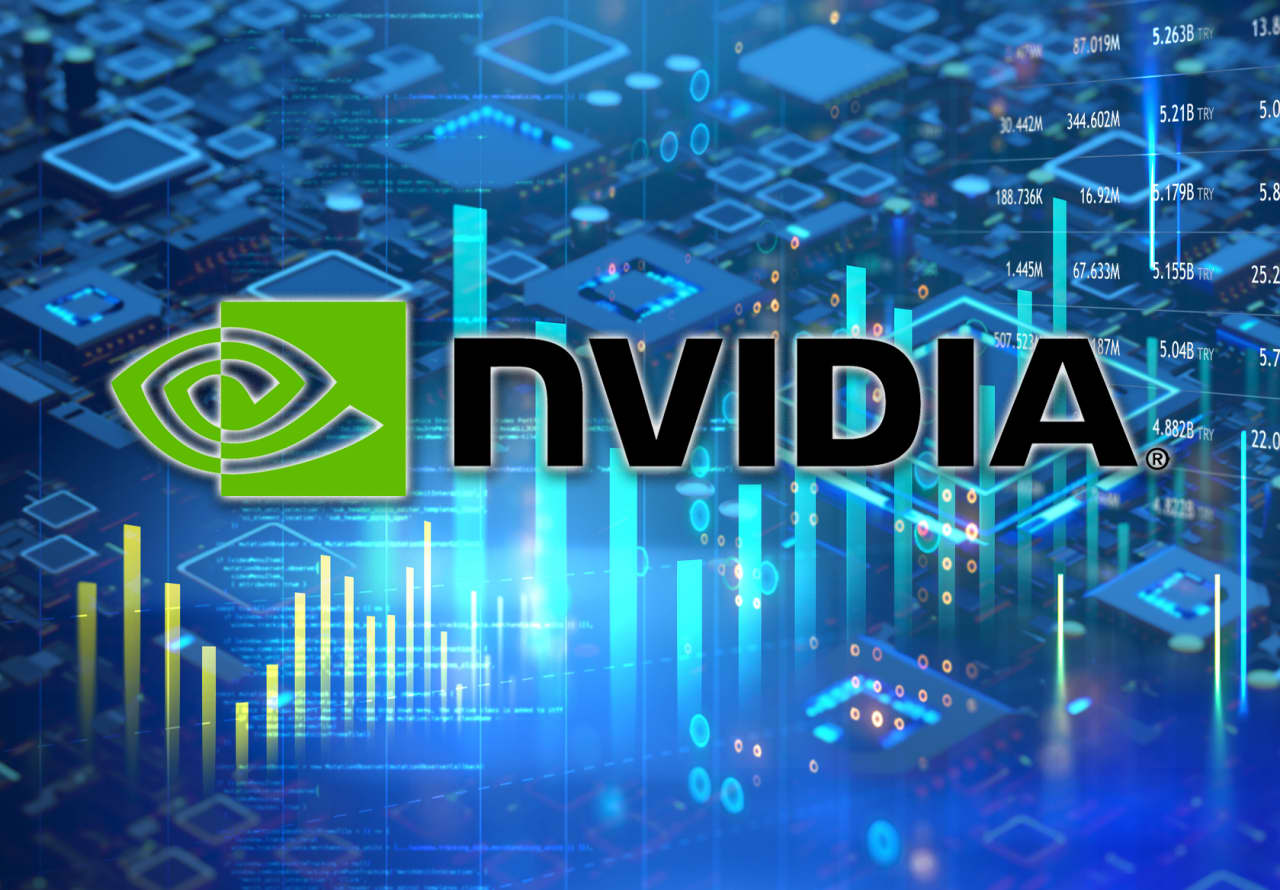Opinion: Nvidia is the ‘Magnificent One’ now — but these rivals are closing in

Nvidia Corp.’s
NVDA,
earnings results felt like a national holiday of sorts. Countdowns and endless commentary surrounded the biggest moment in the stock market so far this year for what Goldman Sachs is now referring to as the most important stock in the world. On CNBC, Jim Cramer was quick to point out that Nvidia CEO Jensen Huang is a bigger visionary than Tesla’s Elon Musk.
Nvidia’s results didn’t disappoint, unless you were short on the stock (R.I.P.). Wall Street analysts’ price-target increases quickly followed. Some of these new targets suggest Nvidia will race to a $2.5 trillion valuation in short order. And why not? The Nvidia bandwagon is packed and everyone is jumping on it. It’s fun to be right and more fun to be right in good company.
But what if everyone is wrong? Isn’t it this type of mania and exuberance that should give the market pause? While Michael Burry has had to close his short bets on Nvidia because the stock has simply outperformed and risen at an unprecedented pace, is there a chance that cooler heads will prevail and that Nvidia’s rocketing market valuation will reverse course?
There is another side to the story. Or, at least, I believe there will be. UBS was the sole Wall Street firm to cut its price target on Nvidia post-earnings, dropping it to $800 a share (around where the stock traded on Friday) from $850. That’s hardly an indictment on Nvidia, still placing its market capitalization at nearly $2 trillion, but also a major sentiment swing in an arena full of bulls. What does UBS see that others don’t?
In 2020, I said Nvidia would be the next trillion-dollar market-cap company. In mid-2022, I said that Nvidia was a coiled spring and that, along with Microsoft Corp.
MSFT,
it was absolutely going to run on impending AI demand. Then when ChatGPT arrived in November 2022 and created an inflection point for AI, Nvidia stock began its meteoric rise.
“ I simply don’t see Nvidia being able to continue to grow at the rate it has.”
However, there are pitfalls. The setup for Nvidia isn’t as perfect going forward as it was the past four quarters. And while the AI space will continue to grow, I simply don’t see Nvidia being able to maintain growth at the rate it has grown throughout 2023 and now into 2024. I believe the next two to three quarters are set up well, but there is one important thing that investors should pay attention to before buying high and then adding higher.
In a word: competition. Nvidia has effectively grown to more than 98% of the market for data-center graphics processing units, or GPUs, due to a complete lack of meaningful competition. This early lead has given the company unbounded pricing power, driving its margins in the most recent quarter to over 76%. With cloud providers desperate to get their hands on every GPU and AI-compute system available, this has created a perfect storm of margin expansion that has enabled Nvidia to consistently deliver year-over-year growth in earnings per share of 400% in recent periods.
It is hard not to love a business that can maintain such margins, but these margins are set up because the company is currently the apex predator in its respective space. No real competition has existed at scale, but the world has taken notice, and over the past few months we have seen signs of competition entering the market. This will affect Nvidia’s margins and the company’s ability to continue to grow at such a staggering rate.
The competition isn’t singular either. While Advanced Micro Devices Inc.
AMD,
CEO Lisa Su has launched the most direct competition to Nvidia’s high-performance GPUs — citing a forecast of around $4 billion for the AMD’s new MI300 GPU — the competition is coming from an array of places that include a number of Nvidia’s largest and most important customers.
For example, Amazon.com Inc.’s
AMZN,
AWS cloud has its AI chips for training and inference, Microsoft recently announced its Maia AI chip, and Alphabet Inc.’s
GOOGL,
GOOG,
Google continues to innovate on its Tensor Processing Units (TPUs). Oracle Corp.
ORCL,
and Meta Platforms Inc.
META,
are also developing AI chips in house.
The drivers for these companies to enter the fray are multidimensional, and not as much an indictment on Nvidia as they are a realization by these companies that overdependence on a single source for AI semiconductors is a risk that they simply aren’t willing to take.
This week, Microsoft went as far as to talk about its plan to tap Intel Corp.
INTC,
to help manufacture some of its silicon during Intel’s Foundry event. Additionally, news broke that Microsoft would be developing its own networking chips to reduce dependence on Nvidia, which could be a harbinger of things to come.
The question remains as to why these companies are building their own AI chips. It makes sense for so many reasons: From power efficiency to optimized workloads like language or image processing, often ASICs (application-specific integrated circuits) are less expensive than GPUs and consume less power.
Furthermore, all of these new(ish) entrants to the chip market can develop chips that are optimized for their infrastructure and applications, and for cloud providers this strategy can offer greater profitability and vertical integration while also improving supply resiliency. Rumors are surfacing that Nvidia may in fact enter the $30 billion custom-silicon market, which is a double-edged sword because it could cannibalize some of its higher-margin GPU revenues and forces the company to admit the GPU isn’t optimal to solving every AI problem.
While some will be quick to point out that CUDA, Nvidia’s proprietary programming language, will make change to AMD, Intel or any of the above-mentioned ASICs difficult, the industry is increasingly coming together to fight CUDA’s lock. Efforts to make open-source AI frameworks like Jax and Pytorch standards for programming AI have the potential to water down the stickiness of CUDA, and is something that Nvidia investors should watch.
“The stock’s fastest price-appreciation days may be behind it. ”
In short, competition is real and it is coming to Nvidia in a meaningful way. More competition pressures Nvidia’s pricing, margins and market share, as well as its rates of revenue and EPS growth.
None of which is to say Nvidia is going to fall by anywhere near the velocity by which it rose. But the stock’s fastest price-appreciation days may be behind it. It may have to work a little harder and wait a little longer for the next trillion in market-cap gains — and that may compel some investors to book gains and find another AI bet.
Daniel Newman is CEO and chief analyst at The Futurum Group, which provides or has provided research, analysis, advising or consulting to Intel, ServiceNow, Nvidia, Microsoft, Amazon, IBM, Oracle and other technology companies. Neither he nor the firm have any other positions in any of the companies cited. Follow Newman on X @danielnewmanUV.
Also read: Nvidia’s growth and Intel’s chip-making plans depend on AI fulfilling its promise
More: R.I.P. the ‘Magnificent Seven’ says analyst who coined the big-tech moniker. Here’s why.





